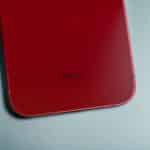Apple has submitted a new proposal to the Unicode Consortium, suggesting that the committee introduce a series of accessibility emojis in future Unicode releases.
As outlined by Emojipedia, the suggestion is that emojis include a guide dog, a hearing aid, sign language, a prosthetic arm and leg, a person in a wheelchair and a person with a cane. The full list can be seen in this proposal document.
In its proposal, Apple says its aiming to better represent individuals with disabilities in order to provide a more inclusive experience for all. Although this is not an exhaustive list of all possibilities, Apple states that it has been designed to make an “initial starting point.”
At Apple, we believe that technology should be accessible to everyone and should provide an experience that serves individual needs. Adding emoji emblematic to users’ life experiences helps foster a diverse culture that is inclusive of disability. Emoji are a universal language and a powerful tool for communication, as well as a form of self-expression, and can be used not only to represent one’s own personal experience, but also to show support for a loved one.
This new set of emoji that we are proposing aims to provide a wider array of options to represent basic categories for people with disabilities. This is not meant to be a comprehensive list of all possible depictions of disabilities, but to provide an initial starting point for greater representation for diversity within the emoji universe.
To create these suggestions, Apple teamed up with the American Council of the Blind, the Cerebral Palsy Foundation, and the National Association of the Deaf. The initial proposal focused on people in four categories: Blind and Low Vision, Deaf and Hard of Hearing, Psychical Motor, and Hidden Disabilities.
Apple has said that this proposal is a “significant step forward in representing more diverse individuals” and that there’s a hope it will “spark a global dialogue around better representation of people with disabilities.”
Apple is a company that’s well-known for creating products that are accessible to all users, with Accessibility features built into all devices and a dedicated Accessibility section on its website. Here it shares stories of people that have improved their lives with Apple products.
The Emoji 11.0 characters have already been finalized by the Unicode Consortium and these will be introduced to smartphones later this year. Apple’s proposed accessibility characters could be therefore be added to Emoji 12.0 set for release sometime in 2019.













